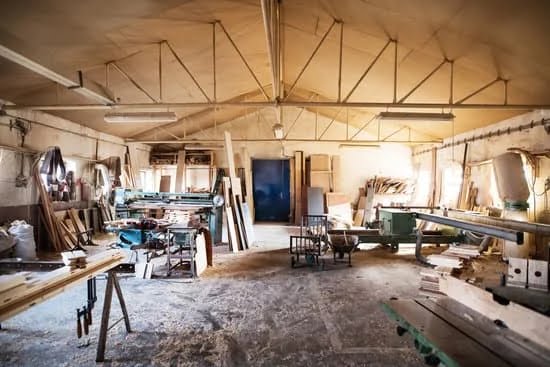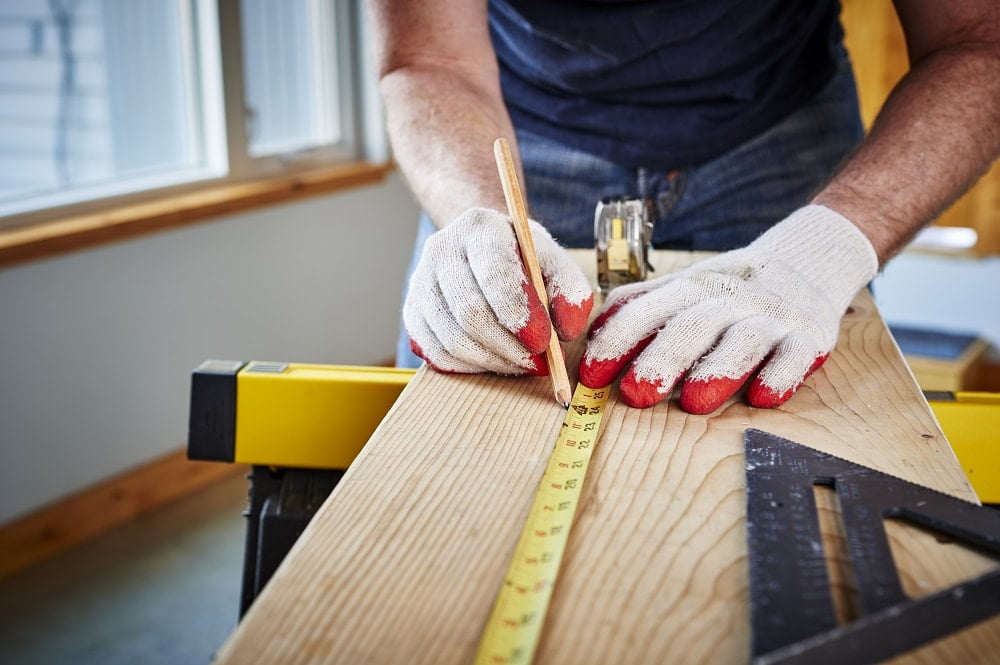Do it yourself woodworking projects have become increasingly popular among individuals looking to unleash their creativity and tackle hands-on tasks. Whether you’re a beginner or an experienced DIYer, woodworking can be a rewarding and fulfilling hobby. This introductory section aims to provide insights into the world of DIY woodworking projects, guiding you through the essential tools, materials, and steps to kickstart your woodworking journey.
Engaging in do it yourself woodworking projects offers numerous benefits beyond just creating beautiful pieces of furniture or decor. It allows individuals to develop valuable skills such as problem-solving, precision, and attention to detail.
Additionally, working with wood can be a therapeutic and stress-relieving activity that promotes mindfulness and creativity. Whether you’re looking to enhance your home with custom-made pieces or simply enjoy the satisfaction of building something from scratch, woodworking is a versatile hobby with endless possibilities.
Before embarking on your first DIY woodworking project, it’s crucial to familiarize yourself with the essential tools and materials needed for beginners in woodworking. From measuring tools like tape measures and squares to cutting tools such as saws and drills, having the right equipment will set you up for success in your projects.
Additionally, understanding how to safely use these tools is paramount in ensuring a smooth and enjoyable woodworking experience. As we delve deeper into this article, we will explore step-by-step guides, inspiring project ideas for beginners, intermediate level challenges, advanced projects for seasoned DIYers, as well as tips for success and safety precautions in your woodworking endeavors.
Benefits of Engaging in Do It Yourself Woodworking Projects
Engaging in do it yourself woodworking projects can bring a multitude of benefits, apart from the satisfaction of creating something with your own hands. One of the main advantages is the cost-effectiveness of DIY projects. By making your own furniture or home decor pieces, you can save money compared to buying them from stores. Additionally, you have the freedom to customize the project to your liking, ensuring that it fits perfectly into your space and reflects your personal style.
Enhanced Creativity and Problem-Solving Skills
Another significant benefit of DIY woodworking projects is the opportunity to enhance your creativity and problem-solving skills. When working on a project, you may encounter challenges or unexpected obstacles that require you to think outside the box and come up with innovative solutions. This process not only improves your woodworking skills but also translates into other areas of your life where creative thinking is required.
Sense of Accomplishment and Personalized Gifts
Furthermore, engaging in do it yourself woodworking projects can provide a sense of accomplishment and pride in what you have created. Whether it’s a simple shelf or a more intricate piece of furniture, seeing the finished product that you built from scratch can be incredibly rewarding.
Additionally, handmade woodwork makes for thoughtful and personalized gifts for family and friends on special occasions, adding a personal touch that mass-produced items lack. Overall, the benefits of engaging in DIY woodworking projects extend beyond just material possessions, enriching your skills, creativity, and sense of fulfillment.
Essential Tools and Materials Needed for Beginners in Woodworking
Embarking on your journey into the world of DIY woodworking projects can be an exciting and fulfilling experience. However, before you dive in, it’s essential to gather the right tools and materials to set yourself up for success. Here is a list of the basic tools and materials that every beginner in woodworking should have:
- Measuring tape: Accurate measurements are crucial in woodworking to ensure precision and symmetry in your projects.
- Hammer: A versatile tool that is essential for tasks such as driving nails or adjusting joints.
- Saw: Whether it’s a handsaw, circular saw, or jigsaw, having a reliable saw is necessary for cutting wood to size.
- Sanding block or sandpaper: Smoothing out rough edges and surfaces is important for achieving a professional finish on your projects.
- Clamps: These are handy for holding pieces of wood together securely while glue dries or when joining them with screws or nails.
In addition to tools, beginners in woodworking will also need a selection of materials to bring their projects to life. Here are some common materials that you may need:
- Wood: The star of any woodworking project, choosing the right type of wood for your project is crucial. Popular choices include pine, oak, maple, and cedar.
- Nails and screws: These fasteners are essential for joining pieces of wood together securely. Make sure to have a variety of sizes on hand.
- Wood glue: A strong adhesive that is essential for bonding wood pieces together. Look for a reliable brand that provides a durable bond.
- Finishing supplies: Depending on the desired look of your project, you may need varnish, stain, paint, or sealant to protect and enhance the appearance of the wood.
By ensuring that you have these essential tools and materials in your workshop, you will be well-equipped to tackle your first do it yourself woodworking project with confidence. Remember that investing in quality tools from the start will not only make your projects easier but also provide more satisfying results in the end.
Step-by-Step Guide on How to Start Your First DIY Woodworking Project
For beginners who are eager to dive into the world of do it yourself woodworking projects, starting with a simple yet rewarding project is key. Here are some basic steps to guide you through your first woodworking endeavor:
- Choose a project: Decide on a beginner-friendly woodworking project that aligns with your interests and skill level. This could be anything from building a bookshelf to crafting a wooden picture frame.
- Gather necessary tools and materials: Before starting your project, make sure you have all the essential tools such as a saw, hammer, measuring tape, and safety gear like goggles and gloves. Additionally, ensure you have the right type of wood for your project.
- Set up your workspace: Create a designated area in your garage or backyard where you can work comfortably and safely. Make sure you have enough space to maneuver and store materials.
Once you have completed these initial steps, you can begin the actual process of creating your first DIY woodworking project. Remember to take your time, follow instructions carefully, and don’t hesitate to ask for help or guidance if needed. With practice and patience, you’ll soon be on your way to mastering the art of woodworking.
Inspiring Project Ideas for Beginners in Woodworking
When it comes to embarking on do it yourself woodworking projects, beginners may feel overwhelmed with where to begin. However, there are plenty of inspiring project ideas that can kickstart your journey into the world of woodworking. One great project for beginners is building a simple wooden shelf. This project requires minimal tools and materials, making it perfect for those who are just starting out. You can customize the dimensions and finish to suit your space and style.
Another fantastic project idea for woodworking novices is creating a wooden serving tray. This project not only serves a practical purpose but also allows you to practice essential skills such as measuring, cutting, and finishing. You can choose different types of wood to create unique designs or add decorative elements like handles or painted accents. Additionally, building a small bench or stool is a rewarding project for beginners that can become a staple piece in your home.
If you’re looking to challenge yourself slightly more as a beginner in woodworking, consider making a wooden picture frame. This project introduces techniques such as mitered corners and glass fitting, while still being manageable for those new to the craft. Picture frames can be personalized with different stains or paints to complement your photos or artwork, making them a thoughtful handmade gift for friends and family.
| Woodworking Project Ideas | Description |
|---|---|
| Wooden Shelf | A simple project requiring minimal tools and materials. |
| Wooden Serving Tray | A practical item to build while practicing measuring and cutting skills. |
| Small Bench or Stool | Create a functional piece of furniture as an introduction to woodworking. |
Intermediate Level Woodworking Projects for Those Looking to Challenge Themselves
For those who have already mastered the basics of woodworking and are looking to take their skills to the next level, intermediate level woodworking projects can provide just the right amount of challenge and satisfaction. These projects typically require a bit more precision, creativity, and patience compared to beginner projects. However, they also offer opportunities for growth and skill development in the craft of woodworking.
Building a Wooden Coffee Table With Storage
One popular intermediate woodworking project is building a wooden coffee table with storage. This project requires the use of more advanced tools such as a table saw, router, and drill press. The design possibilities are endless, from incorporating intricate woodwork details to experimenting with different finishes. Not only will you end up with a beautiful piece of furniture for your home, but you will also gain valuable experience in working with different materials and techniques.
Creating Custom Shelves or Bookcases
Another challenging yet rewarding project for intermediate woodworkers is creating custom shelves or bookcases. This type of project allows you to showcase your creativity and craftsmanship by designing unique storage solutions that fit your space perfectly.
You can experiment with different joinery techniques, such as dovetail or mortise and tenon joints, to add strength and visual interest to your shelves or bookcases. Additionally, you can personalize the design by choosing the type of wood, finish, and hardware that best suits your style.
Designing and Building a Wooden Jewelry Box
For those looking for a smaller-scale woodworking project that still offers plenty of challenges, designing and building a wooden jewelry box can be an excellent choice. This project requires attention to detail in terms of measurements, joinery techniques, and finishing touches.
You can customize the size and compartments of the jewelry box to accommodate different types of jewelry pieces. By tackling this project, you will hone your skills in precision cutting, sanding, staining, and sealing wood – all essential aspects of advanced woodworking projects.
Intermediate level woodworking projects allow DIY enthusiasts to push their boundaries while still providing achievable goals for growth and improvement in their craft. Whether it’s building furniture pieces like coffee tables or bookcases or creating smaller items like jewelry boxes, these projects offer a balance between challenge and accomplishment.
By embracing these challenges head-on and seeking out new techniques and designs to try out in their woodworking projects, intermediate woodworkers can continue on their journey towards mastering the art of do it yourself woodworking projects.
Advanced Woodworking Projects for Experienced DIYers Seeking a Challenge
For experienced DIYers looking to take their woodworking skills to the next level, advanced woodworking projects offer a challenging and rewarding opportunity. These projects usually require a higher level of precision, creativity, and craftsmanship compared to beginner or intermediate level ones. The satisfaction that comes with successfully completing a complex woodworking project can be truly fulfilling.
One popular advanced woodworking project is crafting a intricate dining table with unique details like elaborate wood carvings or inlays. This type of project requires careful planning, precise measurements, and advanced woodworking techniques. Another challenging project could be building a wooden chair with intricate joinery techniques such as dovetails or mortise and tenon joints. These types of projects not only test your skills but also expand your knowledge of woodworking methods.
To tackle these advanced woodworking projects effectively, it is essential to have a good understanding of different types of wood, their characteristics, and how they respond to different techniques. Additionally, having the right tools such as chisels, hand saws, routers, and clamps is crucial for achieving professional results in your projects.
Don’t forget to pay attention to safety measures while working on these challenging projects to prevent accidents and injuries. Remember, practice makes perfect in the world of do it yourself woodworking projects.
| Woodworking Project | Difficulty Level |
|---|---|
| Dining Table with Wood Carvings | Advanced |
| Wooden Chair with Joinery Techniques | Advanced |
Tips and Tricks for Success in Your Do It Yourself Woodworking Projects
Plan and Prepare
Before starting any do it yourself woodworking project, it is crucial to plan out your project thoroughly. Take the time to create a detailed design or follow a set of woodworking plans to ensure that you have a clear idea of what the final product will look like. Additionally, prepare your workspace with all the necessary tools and materials before getting started. This will help streamline the construction process and prevent any unnecessary delays.
Take Your Time
One of the most important tips for success in your do it yourself woodworking projects is to take your time throughout the entire process. Rushing through any project can lead to mistakes or accidents that could have been easily avoided with careful attention to detail. Remember, woodworking is a craft that requires patience and precision, so don’t be afraid to slow down and double-check your work along the way.
Learn From Your Mistakes
It’s inevitable that you will make mistakes while working on your do it yourself woodworking projects – even experienced woodworkers make errors from time to time. The key is not to get discouraged by these mishaps but rather see them as learning opportunities.
Take note of where things went wrong, figure out how you can correct the issue, and use that knowledge to improve your skills for future projects. Remember, every mistake is a chance to grow and develop as a woodworker.
Safety Precautions to Keep in Mind While Working on Woodworking Projects
Woodworking, as a hobby or craft, can be a fulfilling and rewarding experience. However, it is essential to prioritize safety while working on any woodworking project. Accidents can happen in the blink of an eye, but with the right precautions in place, you can minimize the risks associated with using power tools and handling wood materials. Here are some safety precautions to keep in mind while engaging in your do it yourself woodworking projects:
- Always wear appropriate safety gear such as goggles, gloves, ear protection, and a dust mask to protect yourself from flying wood chips, sawdust, and loud noises.
- Before starting any project, make sure your tools and equipment are well-maintained and in good working condition. Inspect power cords for any damage or fraying before plugging in any power tools.
- Keep your work area clean and clutter-free to avoid tripping hazards. Make sure there is adequate lighting in your workspace to see clearly while cutting or assembling pieces.
As you embark on your DIY woodworking journey, remember that safety should always come first. By following these safety precautions and staying alert while working on your projects, you can enjoy the process of creating beautiful pieces without compromising your well-being. Now that you are equipped with the knowledge to work safely in your workshop, you can confidently tackle a variety of woodworking projects with peace of mind. Happy woodworking.
Resources and Websites for Finding Woodworking Plans and Tutorials
Engaging in do it yourself woodworking projects can be a rewarding and fulfilling experience for beginners looking to explore their creativity and craftsmanship. However, one of the essential aspects of starting any woodworking project is having access to reliable resources and tutorials to guide you through the process. Fortunately, there are numerous websites and online platforms dedicated to providing woodworking plans, step-by-step guides, and video tutorials for woodworkers of all skill levels.
One popular website for finding woodworking plans and tutorials is Ana White’s website. Ana White offers a wide range of free plans for furniture, outdoor projects, home décor, and more. Her user-friendly instructions make it easy for beginners to follow along and create beautiful pieces for their homes. Another valuable resource is Woodsmith Magazine’s website, which provides detailed project plans, instructional videos, tips, and techniques for woodworkers at every level.
For those seeking inspiration and guidance on more intricate woodworking projects, Fine Woodworking magazine’s website offers premium content with in-depth articles, project plans from renowned woodworkers, product reviews, and expert advice. The site also features a thriving community forum where members can ask questions, share their work, and connect with fellow enthusiasts.
Whether you are a novice or an experienced woodworker looking to expand your skills and knowledge, these websites are valuable tools that can help you succeed in your do it yourself woodworking projects.
| Website | Content Offered |
|---|---|
| Ana White | Free plans for furniture and home décor projects with user-friendly instructions. |
| Woodsmith Magazine | Detailed project plans, instructional videos, tips, techniques for woodworkers at all levels. |
| Fine Woodworking | Premium content with articles from renowned woodworkers, project plans, product reviews. |
Conclusion
Engaging in do it yourself woodworking projects can be a rewarding and fulfilling experience for individuals of all skill levels. Whether you are a beginner looking to develop new skills or an experienced DIYer seeking a challenge, woodworking offers a creative outlet that allows you to bring your ideas to life.
The benefits of woodworking go beyond just creating tangible objects – it can also boost your confidence, improve problem-solving abilities, and serve as a therapeutic activity to unwind after a long day.
As you embark on your DIY woodworking journey, remember that having the right tools and materials is crucial for success. Starting with simple projects and gradually progressing to more complex ones will help you build your skills and confidence over time. Don’t be discouraged by mistakes along the way – they are all part of the learning process. With practice and perseverance, you will soon find yourself tackling projects once considered beyond your capabilities.
Whether you choose to create handmade furniture, decorative items, or practical household objects, the possibilities are endless in the world of woodworking. By following safety precautions, seeking inspiration from various sources, and continuously expanding your knowledge through resources and tutorials, you can truly unlock your potential as a craftsman. So roll up your sleeves, pick up those tools, and let your creativity soar as you begin your exciting journey into the world of do it yourself woodworking projects.
Frequently Asked Questions
How Do I Start Woodworking From Scratch?
Starting woodworking from scratch requires a few key steps. First, familiarize yourself with different types of wood and tools needed. Next, learn basic woodworking techniques through online resources, classes, or books. Practice these skills by working on small projects before moving on to larger ones for more complex designs.
What Is the Most Profitable Woodworking?
The most profitable woodworking projects often involve creating custom furniture pieces or cabinetry. These items can be sold at a premium due to their uniqueness and craftsmanship. Additionally, niche markets such as handmade wooden toys or decorative items can also be lucrative if marketed effectively to the right audience.
Is Woodworking Still Profitable?
Woodworking can still be profitable in today’s market, but it often depends on various factors such as your skill level, target market, and business strategy. While competition may be tough due to mass-produced furniture options, customers are increasingly looking for unique handmade pieces with quality craftsmanship.
By focusing on high-quality products and effective marketing strategies, woodworking can continue to be a profitable venture in the long run.

Hi everyone! I’m a woodworker and blogger, and this is my woodworking blog. In my blog, I share tips and tricks for woodworkers of all skill levels, as well as project ideas that you can try yourself.





